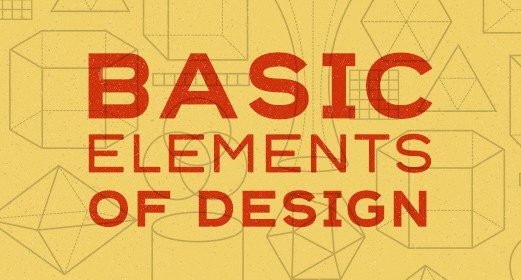Basic elements of design
In order to do professional graphic design, must learn the basic principles in this field. These principles include the knowledge of colors, lines, shapes, scales and sizes, textures and observing distances, and all these things together make the whole design. If you are at the beginning of doing graphic design, it is essential for you to know the elements that we will discuss further.
Color
Color has a huge impact on the feeling a design conveys. Red color mainly shows intense emotions such as love, anger, emotion and passion, while blue color makes the work of art relaxing and peaceful. By using color, you can emphasize important information or draw the eyes to a particular point.
Line
The quality and how to use them in graphic design can convey many meanings and concepts. Hand-drawn lines or thick lines give the artwork a fresher and more lively feel, while smooth and narrow lines add more formality. How the lines are related is also an important issue. Convoluted lines convey disorganization and confusion.
Shape
The shapes and forms used in graphic design, like other elements, are very effective in the feeling and understanding received from a graphic design. Angular shapes like square or triangle show masculinity, and flat or curved shapes like circle instill femininity. The square shape is more familiar to everyone, like a monitor, paper or TV screen, so it is more reliable for conveying a message. Circles are also more pleasing to the eye and appear more natural, and at the same time they are soothing and unifying.
Size
Add balance, proportion and contrast to your graphic design with the correct scale and size. Size means the exact dimensions of an element on the page and scale means the relationship of the elements of a page with its original size. Like placing a person on a billboard, which obviously, considering the size of the billboard, the size of the person is also bigger than the usual size.
By using the scale and size and the correct relationship between the two, you can show the real size of the objects well or emphasize the difference in the size of the two objects.
Space
Spacing allows the design to breathe and the viewer’s eyes to rest. Improper use of it makes the design unprofessional. For example, using too much space shows the design to be incomplete or half-finished.
Texture
Texture is used to convey a sense of realism in graphic design. By showing the texture in the design, it can add more visual appeal to the artwork. The texture is not only used in the computer, you can show the texture well in your work by carefully choosing the printed materials and high quality.
